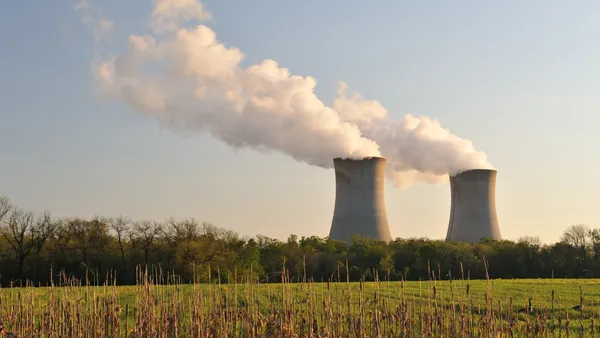Dive Brief:
- Arizona Public Service, the power provider for the Phoenix region, will file a general rate case with the Arizona Corporation Commission June 1, asking for a comprehensive review of its rates for the first time in five years, according to a release provided to Utility Dive.
- APS wants the commission to approve a $3.6 billion investment over the next three years, resulting in an average annual bill increase of 7.96% for residential customers. This would pay for operations, including a $500 million modernization of its Ocotillo natural gas facility.
- APS is also asking the ACC to approve a lower volumetric charge and three demand charge options for residential customers. This, the utility said, would allow more equitable recovery of its fixed and variable costs than its current rate structure.
Dive Insight:
With its new rate proposal, APS joins the nationwide trend of utilities pushing residential demand charge proposals.
Typically used for commercial and industrial customers, demand charges determine a portion of a customer's bill based on monthly peak usage. In Arizona, fellow investor-owned utilities UES Electric and Tuscon Electric Power both proposed demand charges in 2015, following public power provider Salt River Project, which instituted one earlier in the year.
Under the APS proposal, consumers would have the option of three demand charge rates. The first two options — $6.60/kW and $8.40/kW — would be the same during the winter and summer.
The third option, designed for customers with high peak usage, would include a $16.40/kW charge for summer and $11.50/kW for winter. That option would have a low volumetric rate that will allow customers to lower their overall bill by managing their peak usage, APS Vice President Jeff Guldner said.
The new demand charges will be assessed based on the hour of the customer’s highest average kW usage between 3 p.m. and 8 p.m. each month. The kW of that hour’s average usage will be multiplied by the per-kW demand rate and the total will be added to the monthly bill, in addition to the volumetric charge and other bill fees.
A flat bill option would be made available to a narrow group of customers, such as those with very low usage, seasonal demand, or low income. But customers would have to opt-into the flat rate structure, with demand charges as the default.
While residential customers would see nearly 8% annual bill increases, APS said the average bill increase for all customers under the new plan would be 5.74%.
The higher residential rates are due to the net energy metering-caused cross-subsidy to owners of distributed generation, the utility said. The APS calculation of the cross-subsidy is based on its “cost of service” methodology which is currently under scrutiny in the ACC’s value of solar proceeding.
By lowering its volumetric charges, APS argues the overall bill increase to residential customers resulting from the new demand charges will not be as significant. Consumers who take action to cut peak usage — such as installing home storage or enrolling in a demand response program — could theoretically reduce their bills by targeting the demand charge.
While especially popular among Grand Canyon State utilities, demand charges are catching on elsewhere as well. Chicago utility ComEd just proposed them in a bill that failed to pass the Illinois legislature this week.
But as demand charge proposals have increased in number, so to has the controversy around them. After backlash from consumer advocates and solar installers, UES Electric eliminated mandatory demand charges from its current rate proposal earlier this month, keeping them only for new rooftop solar customers.
How do demand charges compare to time-based rates? This post breaks down the two strategies.














